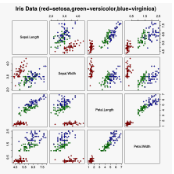Iris pattern recognition has significantly improved the biometric authentication field due to its high stability and uniqueness. Such physical characteristics have played an essential role in security and other related areas. However, presentation attacks, also known as spoofing techniques, can bypass biometric authentication systems using artefacts such as printed images, artificial eyes, textured contact lenses, etc. Many liveness detection methods that improve the security of these systems have been proposed. The first International Iris Liveness Detection competition, where the effectiveness of liveness detection methods is evaluated, was first launched in 2013, and its latest iteration was held in 2020. This paper proposes a serial architecture based on a MobileNetV2 modification, trained from scratch to classify bona fide iris images versus presentation attack images. The bona fide class consists of live iris images, whereas the attack presentation instrument classes are comprised of cadaver, printed, and contact lenses images, for a total of four scenarios. All the images were pre-processed and weighted per class to present a fair evaluation. This proposal won the LivDet-Iris 2020 competition using two-class scenarios. Additionally, we present new three-class and four-class scenarios that further improve the competition results. This approach is primarily focused in detecting the bona fide class over improving the detection of presentation attack instruments. For the two, three, and four classes scenarios, an Equal Error Rate (EER) of 4.04\%, 0.33\%, and 4,53\% was obtained respectively. Overall, the best serial model proposed, using three scenarios, reached an ERR of 0.33\% with an Attack Presentation Classification Error Rate (APCER) of 0.0100 and a Bona Fide Classification Error Rate (BPCER) of 0.000. This work outperforms the LivDet-Iris 2020 competition results.
翻译:Iris 模式的识别大大改善了生物鉴别认证领域,因为它具有高度稳定性和独特性。这些物理特征在安全和其他相关领域发挥了不可或缺的作用。然而,演示攻击(又称假冒技术)可以绕过使用印刷图像、人工眼睛、纹理隐形眼镜等手工艺品的生物鉴别系统。许多改进这些系统安全的活性探测方法已经提出。第一次国际Iris Lives Silence Serve 检测竞争(对活性检测方法的有效性进行了评估)于2013年首次启动,并在2020年举行了最新的迭代。本文提出了基于移动网络3 CER 修改的序列结构,从抓起对真实的 Iris 图像与提交攻击图像进行分类培训。真实的类别包括活性 iris 图像,而攻击演示工具类由固态、印刷和接触镜像组成,共四种情景。所有图像都是预处理和加权的,每类显示一次公平评估。 总体而言,LivDeder-Iris 201 演示获得了双级的升级。此外,我们展示了一个新的三类和四级的Oal-ral Ral oral oral 方法,这三级分别是改善了E-ral-ral-ral 。




